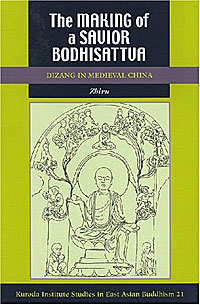In modern Chinese Buddhism, Dizang is especially popular as the sovereign of the underworld. Often represented as a monk wearing a royal crown, Dizang awaits the faithful to help them navigate the complex underworld bureaucracy, avert the sufferings of hells, and arrive at the happy realm of rebirth. The author examines this important Buddhist deity during his formative period - before he settled into his modern role as beneficent ruler of the underworld, when his iconography and hagiography were still rife with possibilities. She begins by problematizing the reigning evolutionary model of Xizang as the gradual sinicization of the Indian Ksitigarbha, a relatively unknown bodhisattva, into Dizang, an underworld deity. Such a model obscures the many-faceted personality and iconography of Dizang. Rejecting it, the author deploys a broad array of materials (scripture, epigraphy, art, ritual texts, and narrative literaure) to recomplexify Dizang and restore what this figure meant to Chinese Buddhists from the fifth to tenth centuries. Rather than privilege any one genre of evidence, the author treats both material artifacts and literary works, canonical and noncanonical sources, to uncover forgotten aspects of the medieval Dizang. Through her analysis, the Dizang cult, far from being an isolated phenomenon, is revealed as integrally woven into the entire fabric of Chinese Buddhism, functioning as a kaleidoscopic lens encompassing a multivalent religio-cultural assimilation and so resists the usual bifurcation of doctrine and practice or "elite" and "popular" religion. "The Making of a Savior Bodhisattva" presents a fascinating wealth of material on the personality, iconography, and lore assicated with the medieval Dizang, while it elucidates the complex dynamics underlying the making of a savior cult in Chinese religion. Это и многое другое вы найдете в книге The Making of a Savior Bodhisattva: Dizang in Medieval China (Studies in East Asian Buddhism) (Zhiru)
The Making of a Savior Bodhisattva: Dizang in Medieval China (Studies in East Asian Buddhism) Zhiru
Подробная информация о книге «The Making of a Savior Bodhisattva: Dizang in Medieval China (Studies in East Asian Buddhism) Zhiru». Сайт не предоставляет возможности читать онлайн или скачать бесплатно книгу «The Making of a Savior Bodhisattva: Dizang in Medieval China (Studies in East Asian Buddhism) Zhiru»
